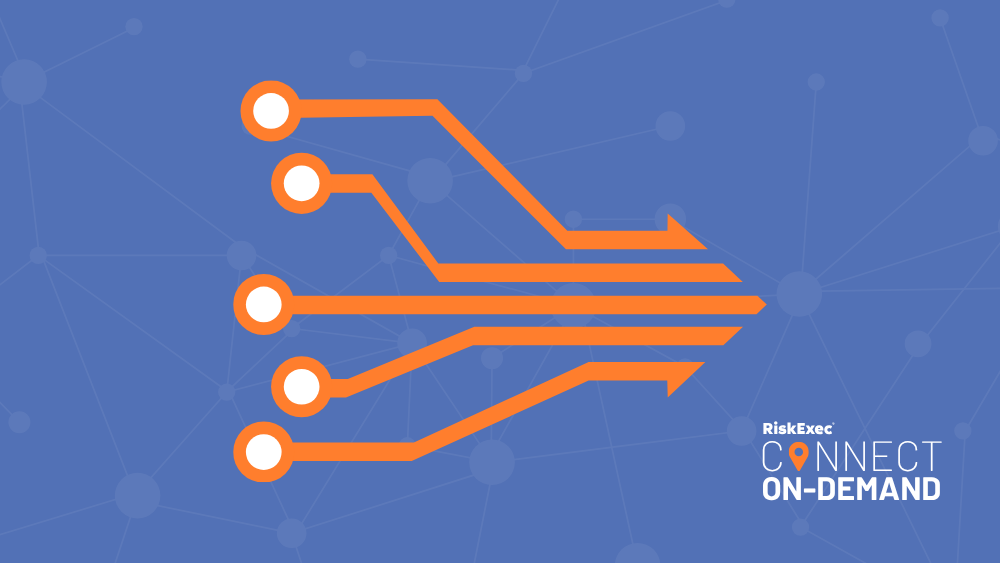


As part of RiskExec’s annual virtual event titled “RiskExec Connect 2025,” Arielle Sutherland, Director of Compliance Products at RiskExec, sat down with Dan Matthews, Director of Fair and Responsible Banking at Synovus, and Shannon Thomason, Senior Vice President and Deputy Chief Compliance Officer at Central Bank, to discuss how modernization is changing the way institutions approach compliance.
Their conversation revealed a shared journey that many banks and credit unions are currently navigating: evolving from slow, manual review processes to automated, audit-ready analytics that save time, strengthen accuracy, and provide deeper insight.
Both Matthews and Thomason described the transformation not just as a technological upgrade, but as a cultural one—an evolution in how their internal teams think about compliance, collaboration, and growth.
View the full 40-minute Innovation Spotlight session featuring Central Bank, Synovus, and RiskExec experts as they discuss workflow modernization, analytics, and growth.
For both Synovus and Central Bank, their modernization journey began by addressing a common compliance team challenge: too many spreadsheets and too little time.
Matthews recalled that his team “used to live in Excel,” managing macros and manual checks that were “imperfect” and prone to breaking. Moving to an automated system allowed his team to batch edits, push updates in bulk, and embed comments that automatically created an audit trail. The result, he said, was “monumental” time savings and the assurance that “any record change included the reason behind it.”
At Central Bank, Thomason described a similar breakthrough with geocoding. “Geocoding, to me, in RiskExec, is a game changer,” she said. “It’s very accurate, and it keeps that manual process out of the hands of your first line.”
Both institutions saw their review cycles shorten from weeks to days after switching to using RiskExec’s compliance software, freeing compliance professionals to focus less on formatting and more on interpreting results.
Once their workflows became more efficient, both teams focused on improving the quality of their analysis.
Thomason noted that Central Bank’s fair lending and redlining reviews now run on a consistent monthly cycle: “We pull our HMDA data mid-month and by the end of the month, we have all of our dashboarding done. We’ve gone from multi-week processes to delivering results within two weeks.”
For Matthews, automation removed friction that had long slowed analysis. “What we’ve been able to do is really get rid of the manual work for the vast majority of our analyses, and rely on reports directly in the system,” he said. “That’s helped us produce results that are not only faster, but also defensible.”
He emphasized that speed alone isn’t the goal. “Time efficiencies are one thing,” Matthews said, “but having good sound practices in the background from a statistical standpoint is maybe even more important.”
By unifying CRA, HMDA, and fair lending data into a single environment, both teams built a stronger foundation for accuracy. The results were measurable and valuable from a business perspective: faster regulator responses, fewer examiner questions, and greater confidence in the numbers being presented.
As both institutions gained better control of their data, they began applying it to broader business decisions.
Matthews explained that automation gave his team the time and flexibility to support forward-looking initiatives. “Now that we’ve cut it down quite a bit,” he said, “we’re able to get in front of business partners, and come up with strategies to tell our story or to mitigate it in the future. That’s helped us be more effective in communication with management and regulators.”
For Central Bank, improved data access meant faster market analysis and stronger collaboration with the rest of the business. Both institutions began leveraging their compliance datasets to identify lending gaps, assess performance in new markets, and even streamline merger and acquisition (M&A) due diligence.
The benefits became clear: the same data that satisfies regulatory requirements can also illuminate growth opportunities when it is timely, accurate, and trustworthy.
When asked how they sustain momentum, both compliance leaders emphasized the same principle: continuous improvement.
Thomason shared that her team treats workflow reviews as a standing practice. “Anytime you’ve got a pain point, you need to surface it,” she said. “We try to look at things at least annually to see if there’s something we can address to further enhance our efficiency.”
She also encouraged looking beyond the software platform itself. “Look at your entire process, not just the part that’s in the RiskExec platform,” she explained. “We found tremendous efficiency gains because we worked with our business intelligence group to improve the data coming in.”
Matthews added that the process of improvement never really ends. “We’re constantly finding new ways to use the system,” he said. “There’s a lot of need for creativity, and we’re integrating reports into our fair lending risk assessment to drive our control adequacy scores.”
Their approaches highlight a larger truth: technology can make teams more capable, but culture is what keeps them improving.
The RiskExec Connect Client Innovation Spotlight session closed with a simple but powerful framework for long-term success: modernize, analyze, and optimize.
Modernization eliminates repetitive, manual tasks and frees up time for more strategic work. Analysis converts clean data into meaningful insight. Optimization uses those insights to drive organizational improvement.
For Matthews and Thomason, this framework now defines their compliance approach. What began as a drive for efficiency has evolved into a model for how compliance can inform risk management, business planning, and institutional strategy.
When compliance data becomes accurate, transparent, and actionable, it strengthens more than exam readiness —it strengthens the organization itself.
Compliance software platforms can conduct batch edit checks, perform batch geocoding, and maintain audit-ready validation logs, reducing manual errors while ensuring every change is documented.
Batch geocoding ensures consistent accuracy across large datasets, saves time, and removes the risk of error from manual address entry.
Centralized analytics make it easier to produce clean, documented data that supports transparency and allows examiners to quickly verify results.